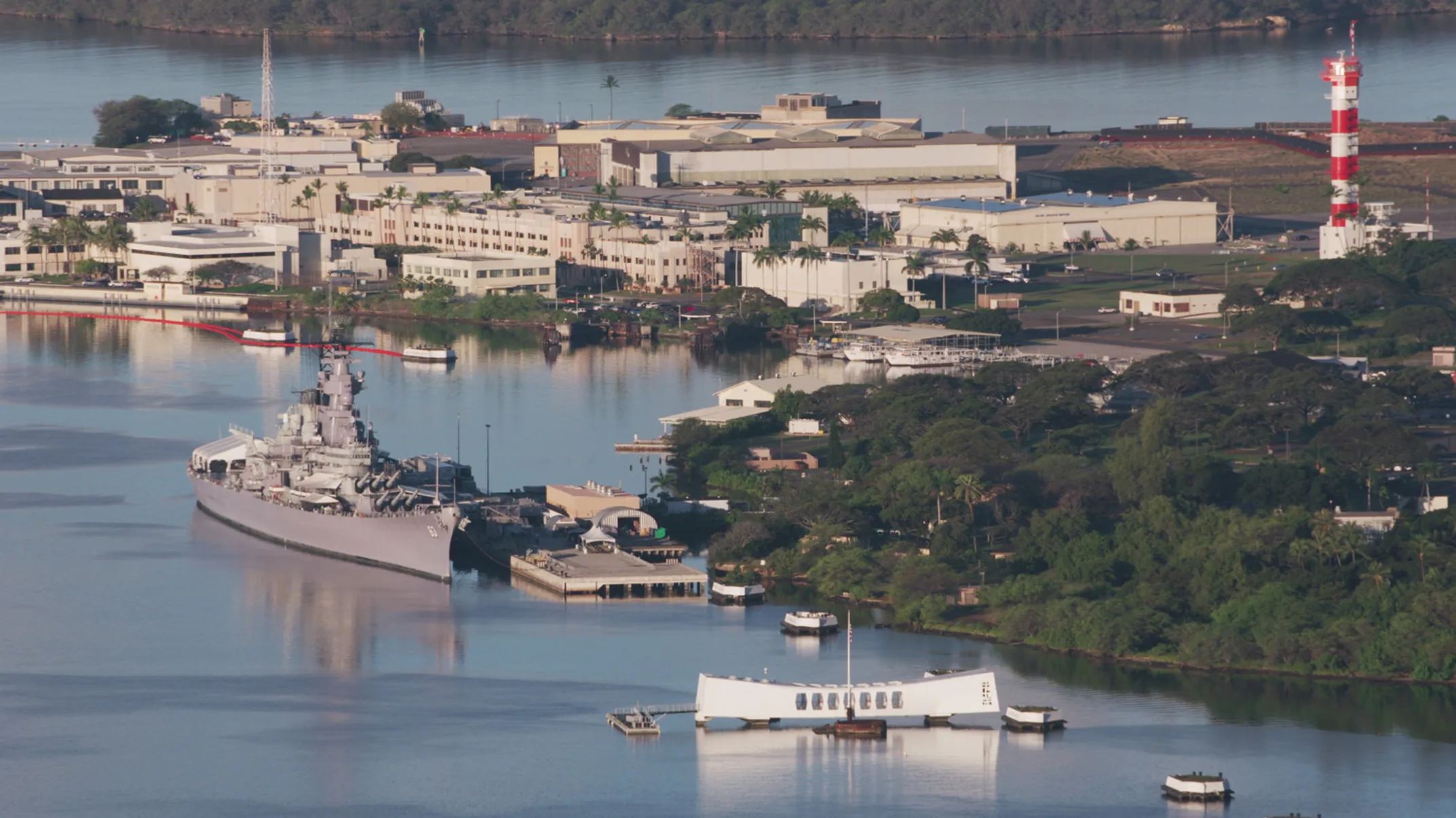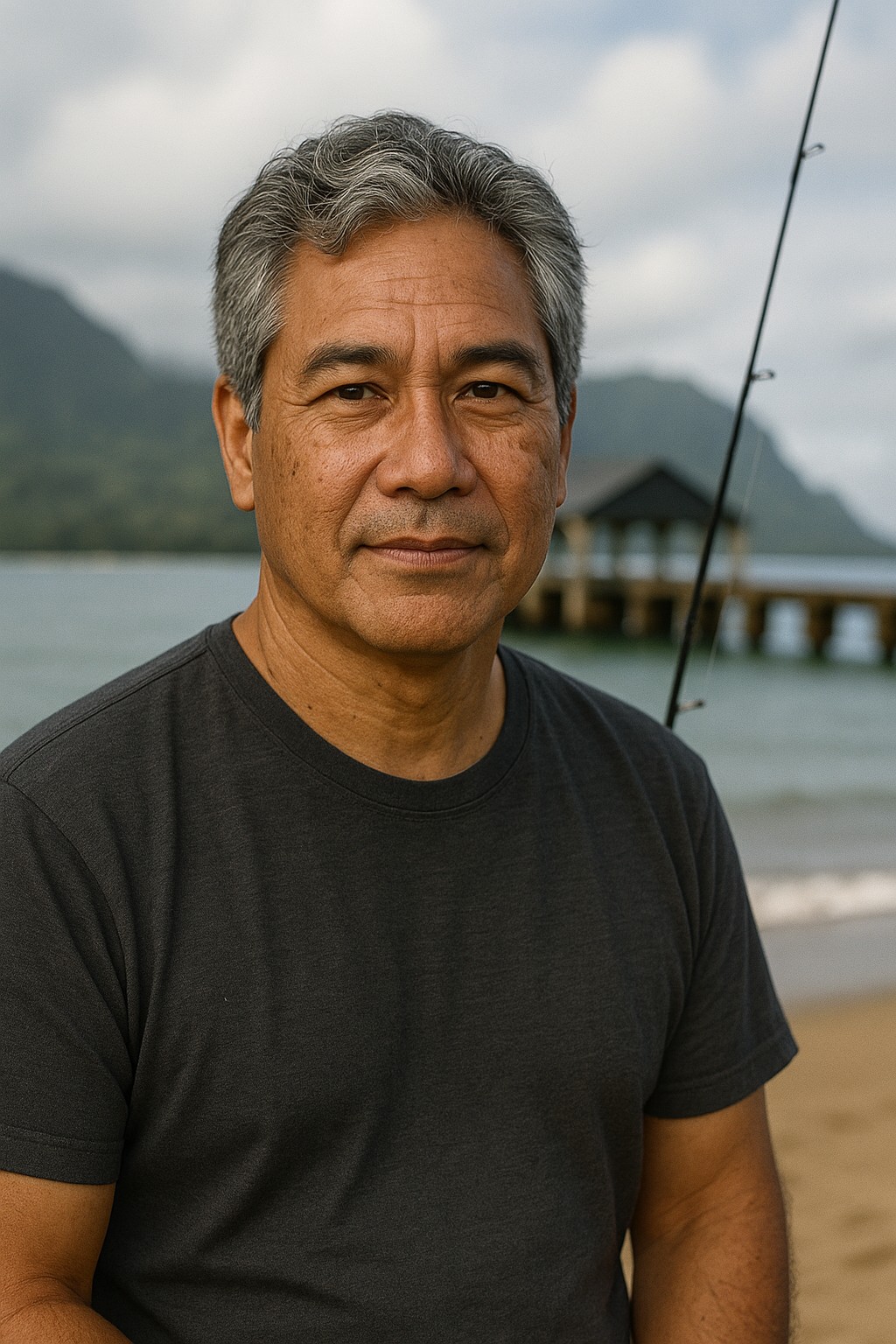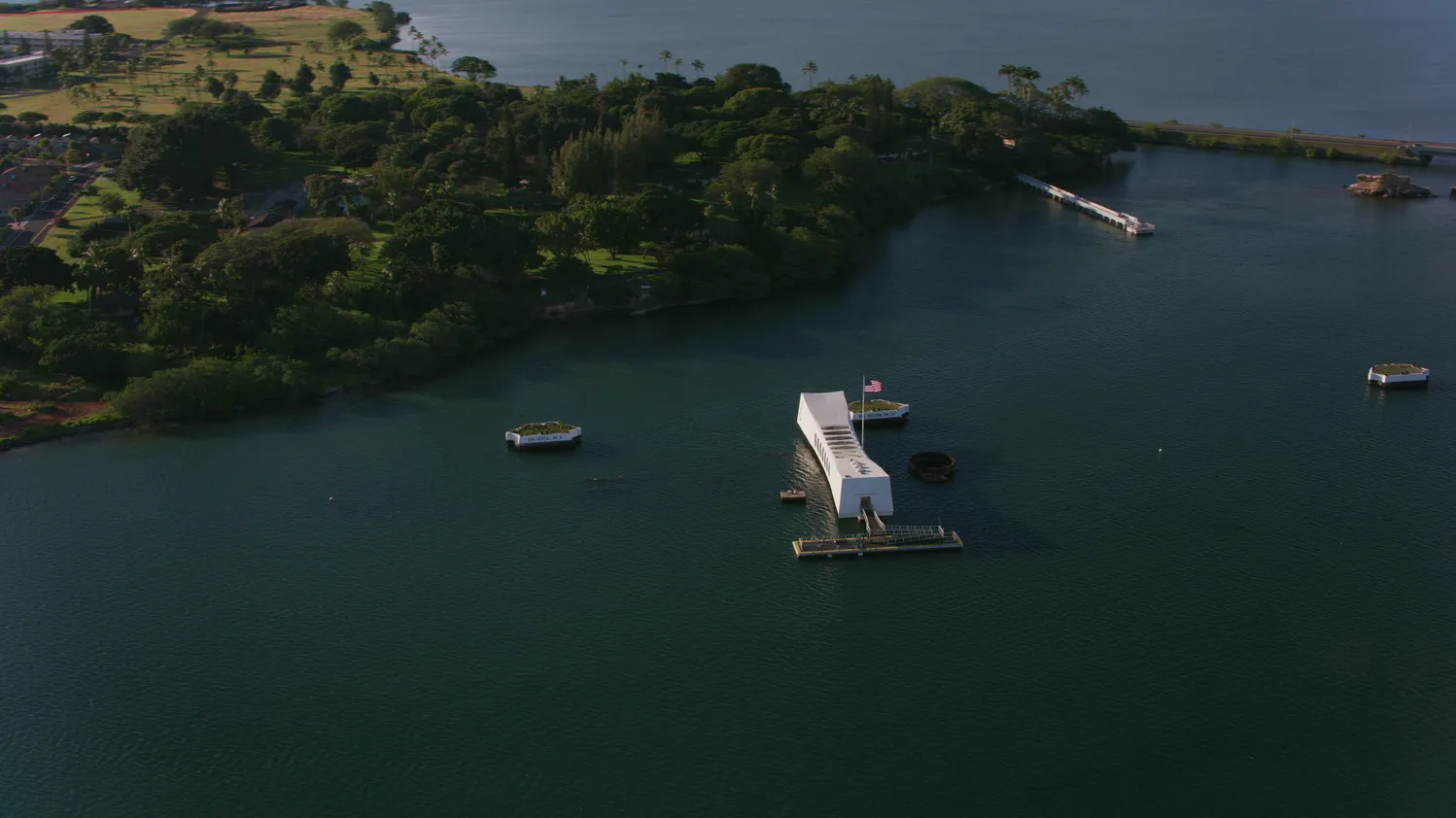

Pearl Harbor and Central Oʻahu
A Kōkua for Your Hawaiian Adventure

Written by a Local Expert
Kalani MillerThe sweet scent of red dirt mixed with trade winds. The distant hum of military aircraft overhead. The quiet rustle of sugar cane fields swaying in the breeze. This is Central Oʻahu—a place where history lives and breathes in ways that will surprise you.
I'm writing this from my kitchen table in Hanalei, but my heart keeps drifting to Central Oʻahu. It's where my papa first took me as a boy to understand what December 7th meant. Where I learned that history isn't just dates in books—it's stories that live in the land itself.
Most folks speed through this valley on their way from Honolulu to the North Shore. They see it as a corridor between the urban energy of Waikīkī and the legendary surf breaks up north. They're missing something special. Central Oʻahu sits cradled between the Waiʻanae Mountains and the Koʻolau range like a green jewel. It holds stories that shaped not just Hawaiʻi, but the entire world.
This is where sugar and pineapple built an empire that drew people from across the globe. Where Chinese, Japanese, Filipino, Korean, Portuguese, and Puerto Rican workers came to the fields and created the melting pot culture that defines modern Hawaiʻi. Where ancient Hawaiian royalty came to give birth under sacred stones. And yes, this is where Pearl Harbor sits—that name that echoes through history books and family stories alike.
The geography itself tells a story. Central Oʻahu's fertile valley was formed by volcanic activity and carved by countless years of rain washing down from both mountain ranges. This created some of the richest agricultural land in the Pacific. Ancient Hawaiians knew this. They established settlements here, grew kalo (taro), and considered parts of this valley sacred. Later, when sugar planters arrived, they recognized the same potential in this red earth.
Whether you're visiting from the mainland to understand a piece of American history, or you're kamaʻāina looking to connect deeper with your backyard, this guide is your kōkua. We'll walk through the halls of memory at Pearl Harbor. We'll taste the stories of plantation life. We'll find hidden pockets of beauty and adventure that most visitors never discover. We'll honor the past while embracing the present.

Pearl Harbor: Where December 7th Still Lives
Pearl Harbor isn't just a place you visit. It's a place that visits you back—in quiet moments, in the way sunlight hits water, in the weight of understanding what happened here. Every time I bring my keiki (children) to Pearl Harbor, I see it through fresh eyes. The questions they ask remind me that these aren't just old stories—they're living memories that shape who we are today.
The harbor itself has always been significant. Ancient Hawaiians called it Puʻuloa, meaning "long hill" or "pearl waters," for the pearl oysters that once thrived here. When the U.S. Navy established a coaling station in the 1890s, they chose this natural deep-water harbor for its strategic value. By 1941, Pearl Harbor had become the home base for the U.S. Pacific Fleet.
On December 7, 1941, at 7:55 AM, the world changed forever. Japanese naval forces launched a surprise attack on the U.S. Pacific Fleet. The planning was meticulous. The execution was devastating. The goal was simple but ambitious: cripple America's naval power in the Pacific so Japan could pursue its expansion in Southeast Asia without interference.
⚓ The Attack's Impact
Nearly 20 American naval vessels damaged or destroyed. Eight battleships hit. Over 300 aircraft damaged or destroyed.
🕊️ Lives Lost
2,403 American service members and civilians lost their lives. Another 1,178 were wounded in just over an hour.
Most tragically, 2,403 American service members and civilians lost their lives that morning. Another 1,178 were wounded. The USS Arizona exploded when a 1,800-pound armor-piercing bomb penetrated its forward ammunition magazine. The explosion was so massive it lifted the 35,000-ton battleship out of the water. More than 1,000 men were trapped inside as the mighty ship sank in just nine minutes.
Explore Pearl Harbor's Complete Story
From planning your visit to understanding each historic site, dive deeper into this comprehensive guide with detailed information on tickets, tours, and Central Oʻahu's cultural treasures.
ℹ️ Quick Info
- Location: Central Oʻahu
- Distance: 30-45 min from Waikīkī
- Hours: 7:00 AM - 5:00 PM
- Best Time: Early morning
- Parking: $7 per day
💡 Essential Tips
- Book USS Arizona tickets 8 weeks ahead
- No bags allowed - use storage
- Wear comfortable walking shoes
- Bring water and sunscreen
🔗 Explore Pearl Harbor & Central Oʻahu
Tickets, security & logistics
The Five Historic SitesUSS Arizona, Missouri & more
Tours & TicketsOptions & recommendations
Beyond Pearl HarborCentral Oʻahu attractions
Adventure ActivitiesZiplines, ATVs & more
Local Food & DiningPlate lunches & local flavors
Sample ItinerariesDay trip planning guides
🎫 Reserve Ahead
USS Arizona Memorial tickets sell out weeks in advance. Book early to secure your visit.
Book on Recreation.govA Complete Guide to Your Central Oʻahu Journey
This comprehensive guide covers everything you need to know about visiting Pearl Harbor and exploring Central Oʻahu. From the solemn memorials that honor those who served to the vibrant plantation villages that tell the story of Hawaii's multicultural heritage, we'll help you navigate this historically rich region with respect and understanding.
Pearl Harbor Memorials
Visit five historic sites including the USS Arizona, Missouri, Bowfin, Aviation Museum, and Oklahoma Memorial.
Cultural Experiences
Explore plantation villages, sacred birthstones, botanical gardens, and taste authentic local cuisine.
Adventure Activities
Balance history with excitement at Coral Crater Adventure Park featuring ziplines, ATVs, and climbing walls.
Understanding the Significance
The path to December 7th had been building for years. Japan's military expansion, particularly its invasion of China, had increasingly concerned the United States. America responded with economic sanctions and trade embargoes, critically cutting off Japan's access to oil and other essential resources. While American officials expected Japanese military action somewhere in the Pacific, an attack on Hawaiian soil—over 4,000 miles from Japan—was largely unforeseen.
This element of surprise was crucial to the attack's initial success. Many sailors were still in their bunks when the first bombs fell. Others were preparing for a peaceful Sunday morning. Some were getting ready for church services. The attack shattered that peace forever.
President Roosevelt called December 7th "a date which will live in infamy." He was right. But the attack did something the Japanese didn't expect and probably didn't want. It shattered American isolationism forever. It united a previously divided nation with singular purpose. It brought us into World War II not as reluctant participants, but as a nation determined to fight for freedom and democracy.
Today, Pearl Harbor serves two roles that somehow complement each other perfectly. It remains an active naval base, home to submarines, destroyers, and other vessels that project American power across the Pacific. And it stands as one of the world's most moving war memorials, a place where the past speaks directly to the present.
The USS Arizona still rests in the harbor exactly where it sank. It's a tomb for 1,102 of its crew members whose bodies were never recovered. Oil still leaks from the ship's hull—about a quart per day—creating what locals call "black tears." Scientists estimate the oil will continue seeping for another 100 to 500 years, ensuring the Arizona will continue to weep for its lost crew long after all of us are gone.
